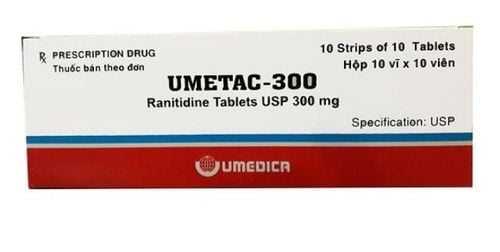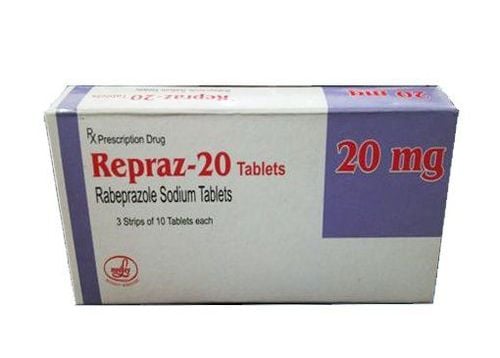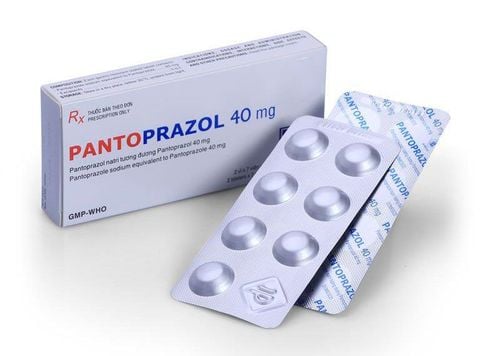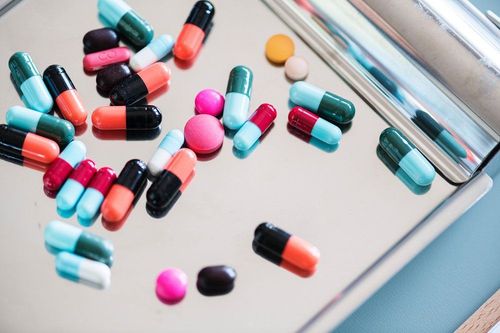This is an automatically translated article.
Posted by Doctor Mai Vien Phuong - Department of Examination & Internal Medicine - Vinmec Central Park International General HospitalMethods used in the treatment of refractory reflux esophagitis include: Lifestyle changes; Use of drugs; Interventional procedures; Surgery or use of alternative and complementary therapies... In which lifestyle changes and medical treatment are important.
1. Lifestyle change
Lifestyle changes, such as elevating the head of the bed at night, losing weight, and avoiding alcohol, tobacco, caffeine, coffee, citrus, chocolate, and high-fat or spicy foods, are often recommended, such as: as first-line therapy for refractory reflux esophagitis (GERD) despite poor evidence for their use. A meta-analysis found that GERD improved with weight loss and head elevation but did not improve with dietary interventions or abstaining from tobacco or alcohol.2. Drug treatments
2.1 Dose doubling PPI-resistant GERD is often defined as symptoms that persist despite PPI use ((PPIs are proton pump inhibitors (PPIs) – Drugs whose main effect is to decrease gastric juice production by long) twice daily.However, for patients who have failed once-daily PPI therapy, the standard of care in clinical practice is to double the dose to twice daily before breakfast and dinner.2.2 Selection of PPIs antacids There are limited data to suggest that one PPI agent is better than another for resistant GERD, however, if the reason for PPI failure is Due to poor adherence, a possible solution may lie in the choice of PPI.For example, Dexlansoprazole MR uses a novel dual delayed-release formulation that allows for once-daily dosing with no regard to timing. during the day or food intake
2.3 PPIs + H2-tag receptor (H2RA) H2RA is often added to PPI therapy to control nocturnal GERD symptoms, because Nocturnal acid secretion is mainly controlled by histamine and is therefore less responsive to PPI therapy. The addition of a nighttime H2RA to a PPI twice daily has been shown to reduce NAB from 64% to 17% and improve both daytime and nighttime GERD symptoms. However, a rapid response to the acid-lowering effects of H2RA can develop in as little as 1 week, suggesting that their use may not be helpful in resistant GERD.
2.4 PPIs + prokinetic Prokinetics, a class of drugs that increase esophageal and gastric motility, may be useful for patients with symptoms of discomfort due to poor esophageal clearance. Prokinetics act at a variety of receptors, including 5-hydroxytryptamine (5-HT) 4, dopamine 2 (D2), motilin, and ghrelin. A recent meta-analysis found that the addition of prokinetics to PPIs provided no benefit in symptom control but improved quality of life. Side effects, including fatigue, cardiac events, tardive dyskinesia, and tremor, have limited use.
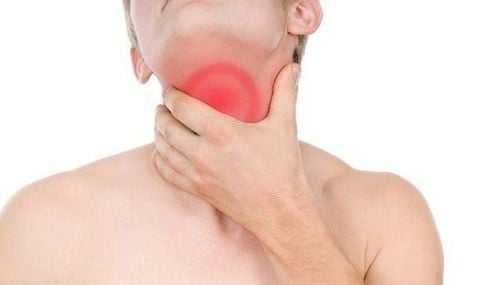
2.6 Cisapride Cisapride is a 5HT4 agonist that increases lower esophageal pressure, enhances esophageal acid clearance, and promotes gastric emptying. In one study, cisapride combined with H2RA was found to be superior to H2RA alone in the treatment and maintenance of heartburn symptoms. However, the addition of cisapride to omeprazole does not appear to improve symptom control. Cisapride was removed from the market in 2000 due to serious cardiac complications including QT prolongation, cardiac arrhythmias, and death. Cisapride is only available through a limited access protocol for investigative purposes or to patients who have failed all other treatments.
2.7 Alginates Alginate, or anionic polysaccharides, such as Gaviscon, have been shown to localize to acid sacs, where they precipitate into a low pH neutral viscous gel that floats to the stomach contents and prevent reflux. The combination of omeprazole and sodium alginate has been shown to significantly improve symptoms after 4 weeks compared with omeprazole alone.
2.8 Sucralfate Sucralfate is a mucosal protector that binds to inflamed tissue and blocks the diffusion of gastric acid and pepsin across the esophageal mucosa, thereby inhibiting the erosive effects of pepsin and bile. Sucralfate also stimulates growth factors that promote mucus and bicarbonate formation as well as ulcer healing. Compared with H2RAs and alginate with antacids, sucralfate was equally effective in controlling EE-associated GERD symptoms but was only shown to heal the esophageal mucosa in low-grade EE. Sucralfate is rarely used in doses up to 4 times daily and has limited efficacy compared to PPIs but is more commonly prescribed in pregnant women, as it is not associated with adverse effects for the mother or the fetus. . Currently, there are no data on the role of sucralfate in patients unresponsive to PPI therapy.
2.9 Bile acid binders Bile acid binders, such as cholestyramine and colesevelam, should theoretically reduce bile acid reflux. However, there are no data on or against their use in PPI-resistant GERD.
2.10 Reflux Inhibitors Abdominal distention dilates the vagus-mediated LES, allowing reflux to occur. Reflux inhibitors that inhibit this relaxation may be most beneficial for patients with symptoms due to weak acid reflux or DGER.
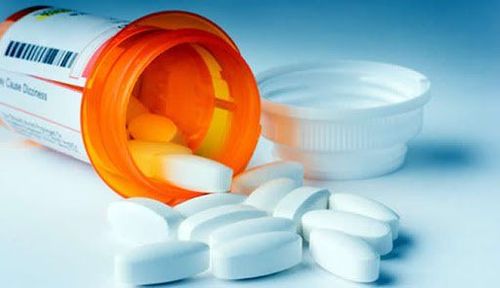
2.12 TCA antidepressants, selective serotonin reuptake inhibitors (SSRIs), and trazodone may ameliorate esophageal pain in patients with visceral hypersensitivity. These agents are thought to induce visceral analgesia by acting on the central nervous system and/or sensory guidance levels. Strongest data on the effectiveness of SSRIs in acid-sensitive esophagus and functional heartburn. In a controlled trial in patients with acid-sensitive esophagus, citalopram 20 mg daily was superior to placebo in improving regurgitation, heartburn, and chest pain. A similar study in 144 patients with refractory GERD found that fluoxetine, compared with placebo and omeprazole, reduced heartburn more, and was particularly effective for patients with functional and esophageal heartburn. hypersensitive. Controlled trials of nortriptyline do not support its use for heartburn symptoms, although observations of TCA in healthy subjects suggest that they may reduce esophageal hypersensitivity. One hypothesis for the difference between the TCA and SSRI trials is that TCA prolongs oceanic times, while SSRIs reduce them, potentially reducing the time that reflux can occur. Trazodone, a serotonin reuptake inhibitor and antagonist, is also effective for relieving chest pain, dysphagia, heartburn, and regurgitation secondary to abnormal esophageal spasms.
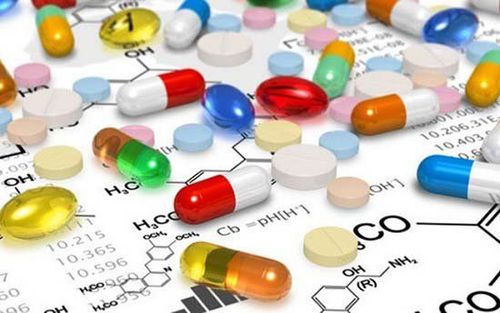
Vinmec Hospital with modern facilities and equipment and a team of experienced experts who are always dedicated in medical examination and treatment, customers can be assured of endoscopy service. colorectal at Vinmec International General Hospital.
Please dial HOTLINE for more information or register for an appointment HERE. Download MyVinmec app to make appointments faster and to manage your bookings easily.
ReferencesMermelstein J, Mermelstein AC, Chait MM. Proton pump inhibitors for the treatment of patients with erosive esophagitis and gastroesophageal reflux disease: current evidence and safety of dexlansoprazole. Clin Exp Gastroenterol. 2016;9:163–172. [PMC free article] [PubMed] [Google Scholar] Scarpellini E, Ang D, Pauwels A, De Santis A, Vanuytsel T, Tack J. Management of refractory typical GERD symptoms. Nat Rev Gastroenterol Hepatol. 2016;13(5):281–294. [PubMed] [Google Scholar] Horn J. The proton-pump inhibitors: similarities and differences. Clin Ther. 2000;22(3):266–280. discussion 265. [PubMed] [Google Scholar] Chiba N, De Gara CJ, Wilkinson JM, Hunt RH. Speed of healing and symptom relief in grade II to IV gastroesophageal reflux disease: a meta-analysis. Gastroenterology. 1997;112(6):1798-1810. [PubMed] [Google Scholar] Joseph Mermelstein, Alanna Chait Mermelstein, and Maxwell M Chait. Gastroesophageal reflux disease resistant to proton pump inhibitors: challenges and solutions. Clin Exp Gastroenterol. 2018; 11: 119–134.





